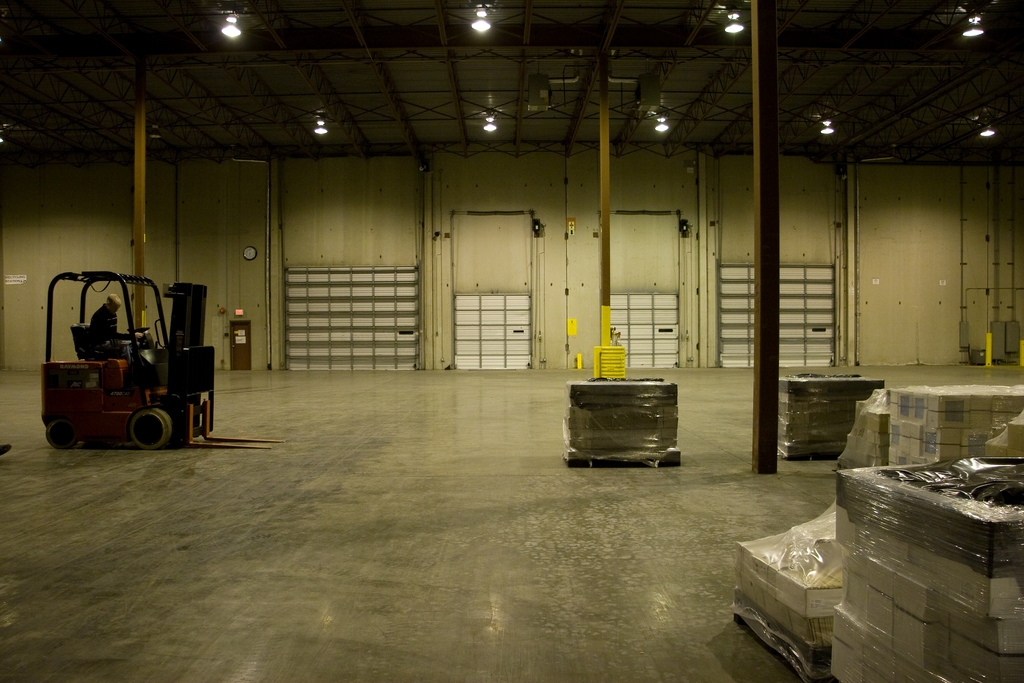Though your warehouse may currently be struggling to keep up with the increased demand from holiday order fulfillments, it’s never too early to start thinking about your next warehouse inspection. Fail it and your company could be out thousands of dollars. Or worse, your job may suddenly be in jeopardy.
At first pass, a warehouse inspection may seem utterly overwhelming in the wake of such a busy season. Still, they’re necessary to keep your staff safe, your product organized and your facility up to snuff.
Fortunately, with preparation, research and proper delegation, your annual warehouse inspection is sure to go off without a hitch. Follow these suggestions to know what to look for during pre-inspection to help you get all the loose ends buttoned up before the big day.

Flickr/Jude Freeman
Why We Need Warehouse Inspections
Besides the obvious goal of maintaining proper safety conditions in and around your warehouse, a thorough inspection will give you the peace of mind to know that your facility complies with government standards before you’re slapped with a pricey fine. It also prevents irreparable tragedies like the disability, dismemberment, or death of your staff.
Should one of your workers suffer serious and preventable injury on your watch, it could result in well-intentioned, albeit scared, family members consulting legal help and filing lawsuits through lengthy court proceedings.
Make a Safety Checklist
Finding potentially dangerous or outdated code violations yourself is far more ideal than having them pointed out, or possibly fined, by health and safety inspectors. It also allows you to repair these pitfalls on your own time without facing the consequences, penalties or damaged reputation that come with a failing health inspection.
Some things to consider:
- Review your Facility Conditions – Make a list of all the physical structures of your warehouse facility. These might include things like windows, doors, ceilings, floors, and any other part that gets steady use or frequently houses employees. When in doubt, make repairs and overcorrect to insulate yourself from fines, lawsuits, or having your license revoked.
- Secure your Hazardous Material – Be it chemical or biological, even a limited exposure to certain workplace hazards can put the health of your employees at risk. Check to make sure they’re being stored correctly to ward off preventable injury or long-term damage.
- Evaluate/Update your Practices – Take a look at the type and number of write ups that were issued the last year. These will give you good indication of work regulations and policies that may need to be reinforced or updated. This could include procedures around the use of essential safety gear, operation of large machinery, or a systematic structure for certain parts of the order fulfillment process.
- Assess your Workplace Environment – Some elements like noise and vibrations may not be entirely avoidable in high-volume warehouses, though some level of precaution should be taken to avoid injury over time. Whether this means implementing certain safety gear like head phones or better regulation of temperature and ventilation make sure an inspector can’t flag you for putting your employees a risk.
Take your Inspections Seriously
Good or bad, your inspection will be accessible to the public and can significantly damage your reputation if it gets in the wrong hands. For this, and other reasons we’ve discussed here, conducting pre-inspections in preparation for the official report is one of the best ways to ensure your partners, vendors, suppliers and clients continue to conduct business with you. It’s also a great way to retain quality competent staff, and could attract like minded prospects once they hear your facility is safe.
Health & Safety Concerns
If the health and safety of your staff is compromised, so is your entire operation. Healthy employees also reflect well on your warehouse inspection, so encourage them to schedule regular checkups with their physician. During these routine appointments they’ll be able to identify potentially threatening or harmful conditions like long-term injuries which may be preventable with slight tweaks to your workplace environment.
Ultimately, it all comes down to preparation. Address any repairs, replacements and reconstruction projects before they become fodder for costly closures or a failing report. By doing so, you’ll have the confidence to ace any inspection and the comfort of knowing your staff will remain a safe and productive part of your warehouse operations.
